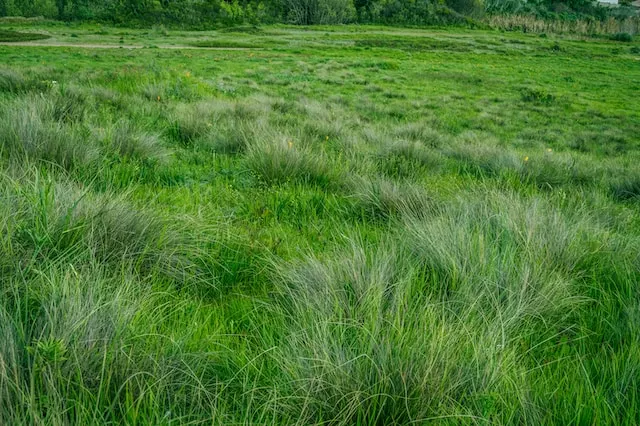Ideal grass for creating lawns in areas where drought and heat prevail, Zoysia tenuifolia, the Mascarene grass, deserves all our interest. Its velvety appearance and slow growth are other significant advantages of this easy-going herb.
The green velvet of the Mascarene grass
Zoysia tenuifolia is a creeping perennial native to Asia and, as its name suggests, the Mascarene archipelago, used as a ground cover. In English, it is known under the name of “Korean velvet grass” because its thin leaves and its growth in tender green tufts give a velvety aspect to this false grass, even when it is trampled barefoot.
Zoysia tenuifolia is a ground cover to replace the grass
The choice of zoysia can be considered for the creation of lawns, as an alternative to grass, in all regions where frost is not too severe because this plant is hardy only down to -10 ° C and it tends to turn yellow. if it’s cold. It is therefore ideal in the Mediterranean area where it tolerates drought and heats perfectly. It makes up ecological lawns requiring only very rare watering when it is properly installed. Its slow growth also makes it possible to reduce mowing operations significantly.
Other advantages of this grass are its resistance to trampling, to spray, and its adaptability. Zoysia tenuifolia is a good solution for creating lawns by the sea. Its natural sheep-like appearance makes it a plant of choice for creating landscapes, especially in Japanese gardens. Conditions for cultivating Mascarene turf.
Exposure
Zoysia tenuifolia appreciates full sun.
Ground
Zoysia is not picky about the nature of the soil. The pH does not matter and it supports dry soils even a little sandy if they are well prepared before planting. However, be careful with very wet soils that Zoysia does not tolerate well.
Planting
The lawn of mascareignes is found in patches, rolls, or pots. The latter solution requires patience because it will take at least two years to obtain a homogeneous lawn, in the meantime, it will be necessary to eliminate all the weeds present in the area. Grass in sods or rolls is much easier to set up and gives good results quickly. Preparing the soil is the same as for a regular lawn. Better to install it in spring than in autumn to avoid possible cold snaps.
Watering and fertilizer
The Mascarene grass requires two to three times less watering than a conventional lawn. A true camel, it can withstand drought without worry once it is well-established. However, for the first two years, make sure it is watered regularly to ensure a beautiful green carpet. The fertilization is much lighter than on traditional lawns, you can divide the recommended dose of fertilizer by three.
Maintenance of this mascarene grass
This plant does not exceed 5 cm in height and its growth is very slow, so it does not require very regular mowing interventions. If you decide to never mow, you’ll enjoy its natural ripples. A scarification annually is desirable to remove the felt.
Multiplication
The division of clumps is the best way to multiply this plant with creeping roots and stoloniferous. Proceed in early spring when temperatures are above 12 ° C day and night. The Mascarene grass in practice exposure subsoil drained type of vegetation perennialHardiness 10°C diseases.
Read also: Top Living Room Interior Design Trends 2023


Leave a Reply
You must be logged in to post a comment.